| Data Sheet | 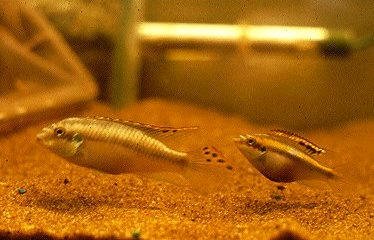
| | Scientific Name: | Pelvicachromis pulcher | | Family: | Cichlids | | Origin: | Africa | | Adult Size: | 3-4 inches (8-10 cm)
8 cm (female), 10 cm (male) | | Social: | Good with same size or larger fish. | | Lifespan: | 5 years |
| | Tank Level: | Bottom Dweller | 
| | Minimum Tank Size: | 20 Gallons | | Diet: | Omnivore, eats most food | | Breeding: | Egglayer | | Care: | Easy, hardy fish | | Ideal pH: | 6.8-7.5 | | Temperature: | 72-79 F (22-26 C) |
| | Tank setup: | Some caves and plants in the aquarium. |
| Sexing:
| Females are smaller, and stubbier and brighter |
|
|
|

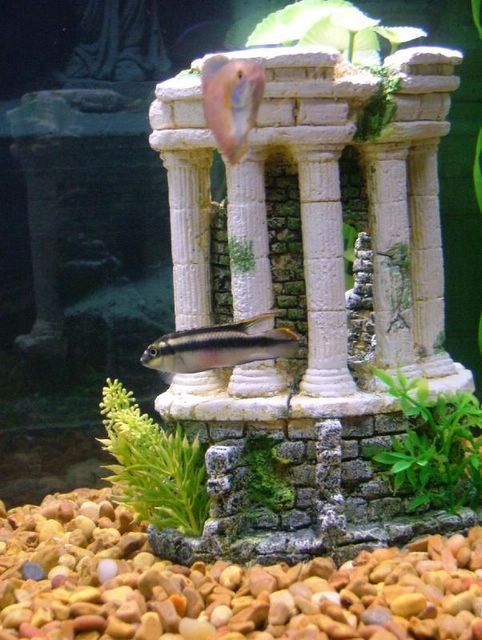

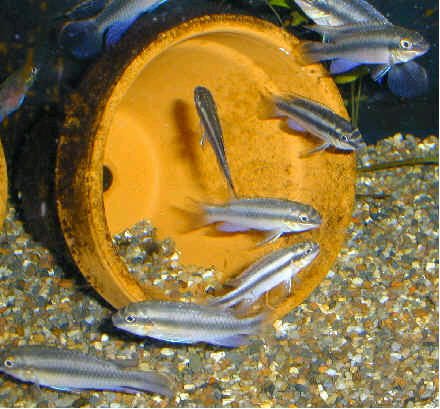
| Description: The Latin translation of "Pelva" meaning 'belly,' "chromis" meaning 'color,' and "pulcher" meaning 'beautiful', describes the fish quite well. During spawning season the female sports a brilliant cherry red colored belly. Males and females can generally be separated by their body size, shape, colors, and fins. Males are typically longer than the females, while the females have larger stomachs, which are purple/red. Females have rounded dorsal fins, whereas the male’s dorsal fin ends in a point. Habitat/Care: Kribensis is an undemanding fish when it comes to water conditions, which is another reason it's so popular. It originates from the drainage area at the mouth of the Ethiop River, Niger delta, where a variety of water conditions can be seen. The water of the low lying black-water streams is acidic and very soft, while the delta waters are slightly brackish, more alkaline, and far harder than the streams that feed it. It is ideal to provide caves to your kribensis as they like some space where they can retreat to (small pots placed on the sides would do). It provides them with more security, and create an environment that mimics the streams they come from. The tank itself should be well planted with real or artificial plants. Because they like to burrow they may uproot plants. However, they are generally not destructive to the vegetation. In addition to caves and plants to provide cover, an area for open swimming should be available. Characteristic of other cichlids, Kribensis are fast swimmers who can change direction in an instant and stop on a dime. They are territorial and if cramped may become aggressive, so take care to avoid overstocking the tank. Mixing with other fishes:Kribensis is often kept in a community tank, however care should be taken in choosing tank-mates. Although they are a peaceful fish, they may nip the fins of slow moving fish such as Angel fish. If other cichlids will be in the community tank, choose a species that is not bottom dwelling. That way they will not compete for the same territory. Avoid keeping them with another cave dwelling species, as Kribensis love their caves. | Diet: Kribensis are omnivorous, and will eat most aquarium foods, including granular, flake, live or frozen foods. Breeding:Kribensis will form monogamous pairs in the aquarium. What this means is that you only need one male and one female to have several successful breedings. To breed these fish, they should have at least 20 gallons of water in an aquarium to themselves because they will vigorously defend their eggs and fry and any other tank occupants would have quite a torrid time. Set the tank up with a mature sponge filter and a couple of caves and the temp set to 77 to 80°F. Include lots of live food in their diet and freeze dried Tubifex. When the Kribensis decides to breed, it will usually select a flower pot or other small cave to breed in. If there are multiple females in a tank, and a pair hasn’t formed yet, the females will lower their pelvic fins slightly so that they look fatter! Perhaps a larger belly is a sign of fertility in the fish, and that this helps to inform the male which is to the best possible mate. Almost without fail, the male Kribensis will always choose the female that has the largest stomach. If there are multiple males in the tank, you will see the females displaying for all of them, but the largest males will attract the largest amount of interest from the largest females. The pair will almost always spawn inside one of the caves and usually on the roof. Both parents will guard the eggs and fry but not always perfectly at first and they may even eat their first couple of broods, this is normal for Cichlids, they quite often need a few attempts before they get it right. A sign that the pair have bred is that disappearance of the female for a week. Also the male will skittishly swim all around the tank. After the week (5-10 days) are up, the female will emerge with a ton of little swimming blobs. The blobs will follow the female very closely and eat anything they can find. Each night, the fry will return to the cave that is used as their home. This may not always be the cave where they were spawned, but usually will be if you have left the fish alone for the most part. Each morning, the female will leave the cave first and scout the tank. Once she is sure that the coast is clear, she will return to the cave and the fry will begin moving out in their strange swarm-like shape again. They are relatively easy to feed and will eat newly hatched brine shrimps, powdered flake and liquid fry food. They grow quite quickly and after about a couple of weeks the fry will spread out away from the parents. The parents should now be removed and the fry left on their own. With a varied diet and plenty of water changes the fry will be almost mature and can take care of themselves after 8 to 12 weeks. Then you have to figure out what to do with 80-120 Kribensis! :) |
Photo GalleyGot a photo? Contact me. 
A Kribensis mother and the fry | 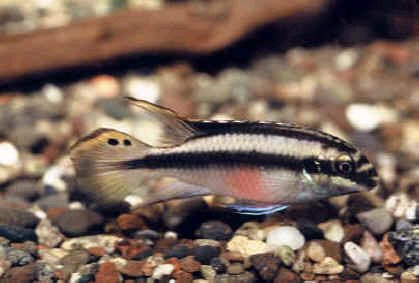 |
| 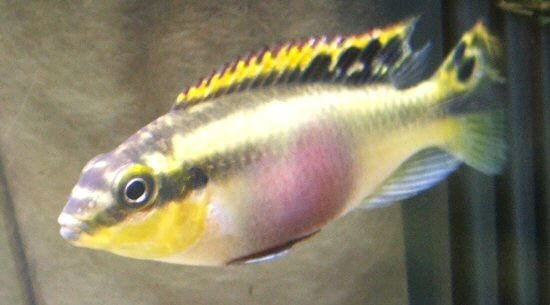
Female Kribensis | 
Pair with fry | 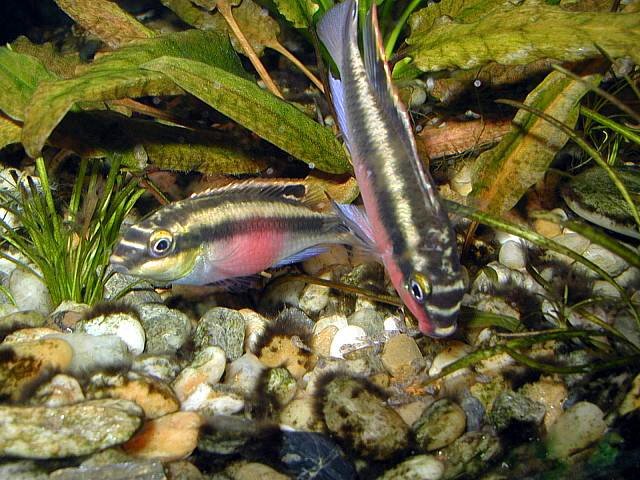
Pair of Kribs |
|
|
|
|
|
|
References Cited:1. David Goodwin (2001), The Aquarium Fish Handbook, D & S books, England.
2. Kribensis, [Online], Available http://groups.msn.com/Breedingtropicalfish/kribs.msnw
3. Pelvicachromis pulcher, [Online], Available http://freshaquarium.about.com/cs/africansgeneral/p/kribensis.htm
4. The Krib (Pelvicachromis pulcher), [Online], Available http://www.theaquarians.net/ArticlesandWallpapers/fish_profile_kribensis.htm |


No comments:
Post a Comment